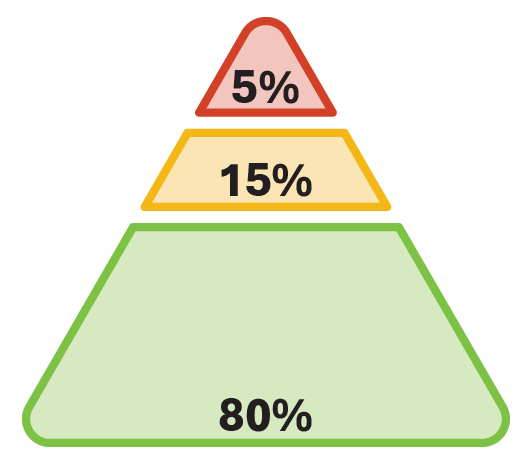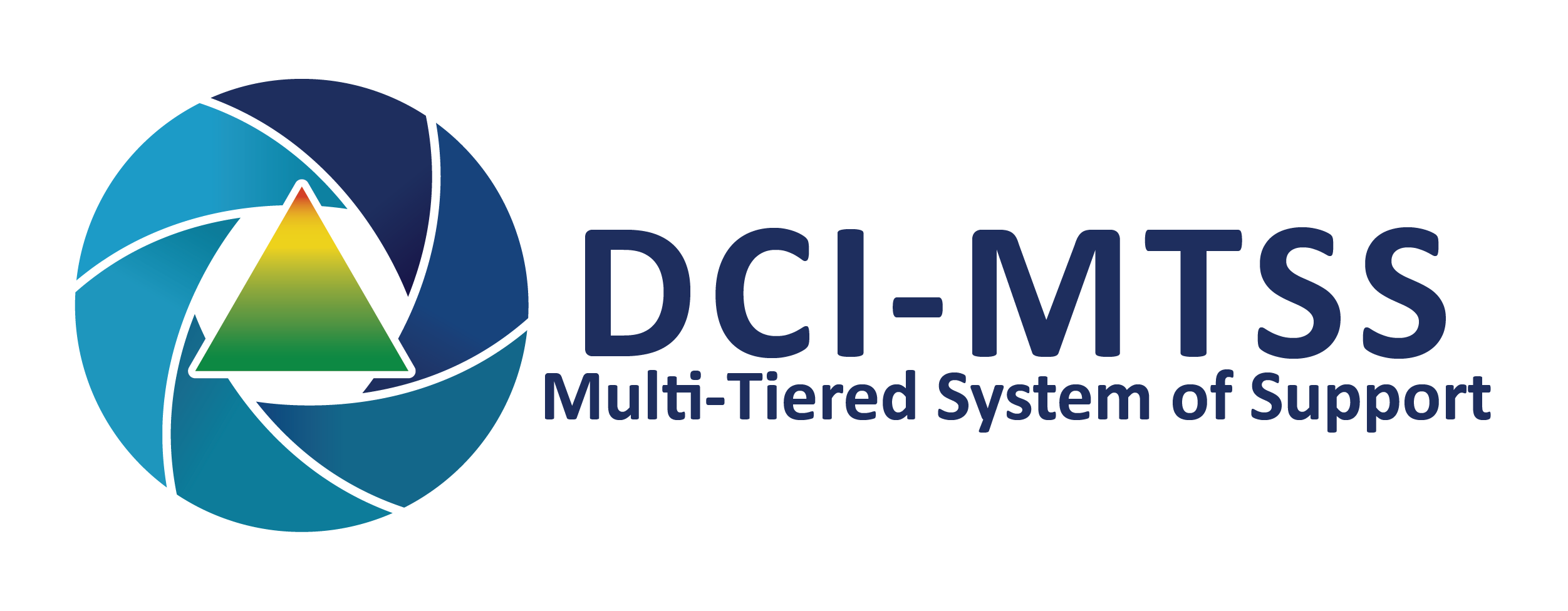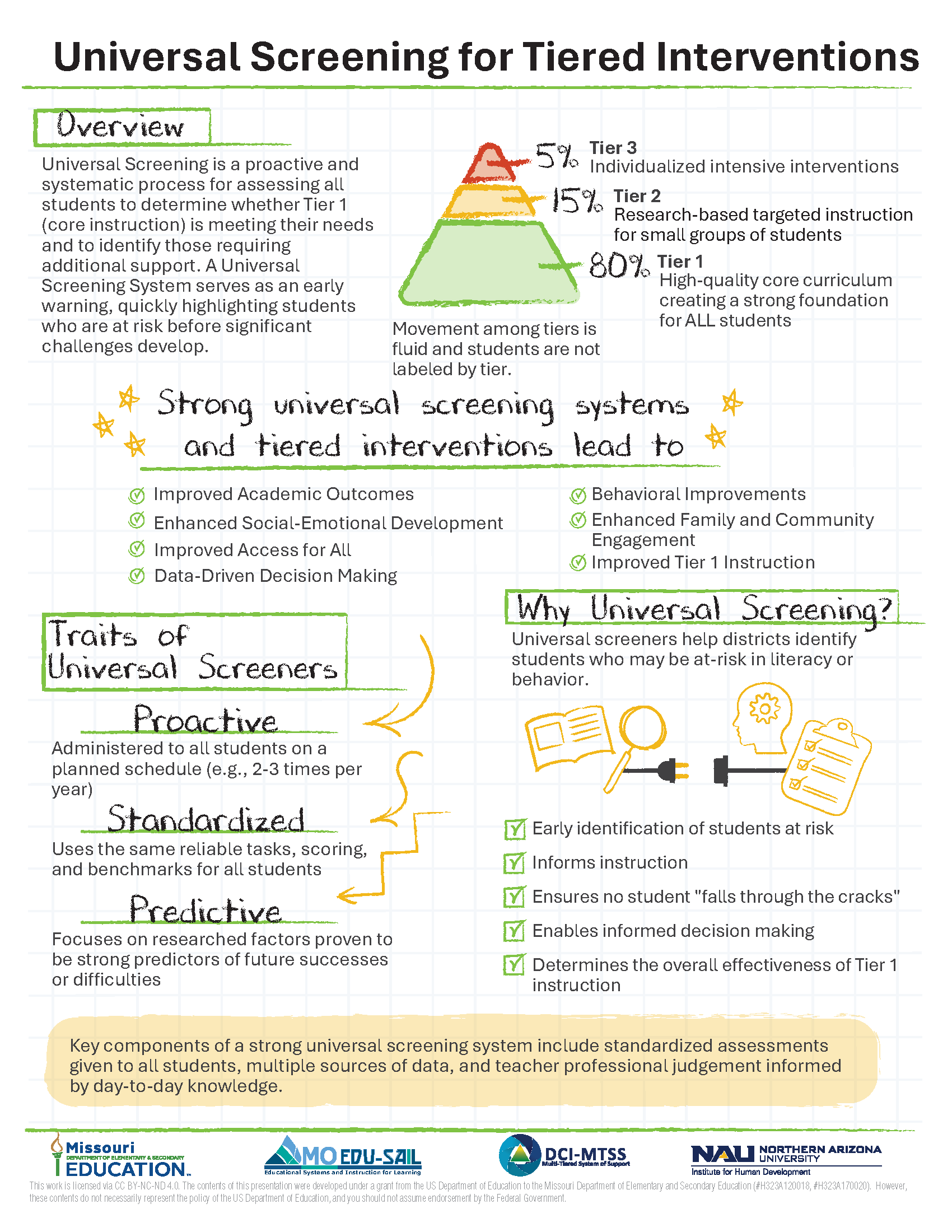Universal Screening for Tiered Interventions
Universal screening is a proactive and systematic process for assessing all students to determine whether core instruction (Tier 1) is meeting their needs and to identify those requiring additional support. A universal screening system serves as an early warning, quickly highlighting students who are at risk before significant challenges develop.
A strong universal screening system incorporates data from three sources:
- A standardized universal screener given to ALL students
- Multiple sources of district data (e.g., literacy data, ODRs)
- Teacher input informed by day-to-day knowledge
With early identification of students at risk, districts use screening data to inform instruction, ensuring no student “falls through the cracks.”
Tiers help to articulate the needs of the student population, oftentimes depicted as a pyramid graphic.
- Tier 1 is the high-quality curriculum creating a strong foundation for all students. Approximately 80% of the student population should fall in this tier.
- Tier 2, approximately 15% of students, provides research-based instruction and interventions for small groups of students with homogeneous academic or behavioral needs.
- Tier 3, approximately 5%, focuses on more intensive interventions, either individually or in a very small group setting.
- Movement between tiers is fluid, and students are not labeled by tier.

Strong universal screening systems and tiered interventions lead to improved academic outcomes; enhanced social-emotional development; data-driven decision making; and improved Tier 1 instruction.
The University Screening for Tiered Interventions Professional Learning Module is divided into four sections:
- Section A (Universal screening and DCI-MTSS) reviews DCI-MTSS and highlights traits and benefits of universal screening and tiered interventions.
- Section B (Selecting and Implementing Universal Screening) provides an opportunity for districts to review potential screening tools.
- Section C (Using Universal Screening Data to Support Instruction and Tiered Interventions) provides a process for reviewing data and determining intervention groups.
- Section D (Introduction to Tiered Interventions) presents guidelines buildings should consider when implementing tiered interventions.
Learning Objectives
In this module, educators will learn to accomplish the following objectives.
- Identify the purposes and benefits of a universal screening system within the context of DCI-MTSS
- Understand how to effectively select and implement universal screening measures for DCI-MTSS
- Use data to support tiered instruction and interventions
Pre/Post Knowledge Check
The pre/post knowledge checks are a component of high-quality professional development. It is recommended that all consultants and other trainers/facilitators use them as they tailor their professional development for their audience. The pre-post knowledge check and the answer key are posted below for downloading and administering.
Presenter Materials
Powerpoint with Presenter Notes
Implementation Supports
Additional Resources







